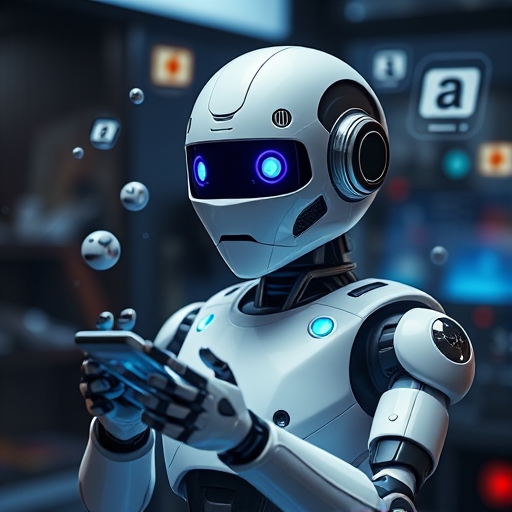How a Chatbot Development Company Builds AI-Powered Solutions
Chatbots are changing the way businesses interact with customers. Whether it’s answering questions, handling orders, or offering support, AI-powered chatbots...

Chatbots are changing the way businesses interact with customers. Whether it’s answering questions, handling orders, or offering support, AI-powered chatbots can make business operations smoother and more efficient. But how does a chatbot development company build these smart solutions? Let’s take a step-by-step look at the process in simple terms.
Understanding Business Needs
Before developing a chatbot, a chatbot development company first understands the business’s goals. Different businesses have different needs. For example:
- An e-commerce store may need a chatbot to help customers find products and track orders.
- A bank may want a chatbot to assist users with account balances and transactions.
- A healthcare provider may need a chatbot for appointment scheduling and health advice.
By understanding the business’s requirements, the chatbot development team can design the right solution.
Choosing the Right Type of Chatbot
There are different types of chatbots, and each serves a unique purpose:
- Rule-based chatbots: These chatbots work on pre-defined rules. They follow a script and respond only to specific inputs.
- AI-powered chatbots: These use artificial intelligence (AI) and machine learning (ML) to understand user queries and provide relevant answers.
- Hybrid chatbots: These combine rule-based and AI-powered features for a better user experience.
A chatbot development company selects the right type of chatbot based on the business’s needs and budget.
Designing the Chatbot’s Conversation Flow
Once the type of chatbot is chosen, the next step is to design how it will interact with users. This involves:
- Identifying the common questions users may ask.
- Creating a smooth conversation flow so that users don’t feel lost.
- Adding personalization to make the chatbot feel friendly and helpful.
For example, a chatbot for a hotel booking website might ask:
- “Hello! Where would you like to book a stay?”
- “Great choice! How many nights will you be staying?”
- “Would you like to add breakfast to your booking?”
A well-planned conversation flow ensures that users get the help they need quickly.
Choosing the Right Technology
A chatbot development company selects the best tools and technologies to build the chatbot. Some popular chatbot-building platforms include:
- Dialogflow (by Google)
- Microsoft Bot Framework
- IBM Watson
- Rasa (open-source)
The choice of technology depends on factors like integration needs, language support, and AI capabilities.
Training the Chatbot with AI and Machine Learning
AI-powered chatbots learn over time. They get smarter by analyzing past conversations and improving their responses. To train the chatbot, developers:
- Feed it with a large set of data (common customer queries and answers).
- Use natural language processing (NLP) to help it understand human language better.
- Test different responses to ensure accuracy.
For example, if a customer asks, “How long does delivery take?” the chatbot should recognize variations like:
- “When will my order arrive?”
- “What is the delivery time?”
- “How soon can I get my package?”
With proper training, the chatbot can provide accurate and relevant answers.
Integrating the Chatbot with Business Systems
A chatbot needs to work smoothly with the company’s existing systems, such as:
- CRM software (to access customer details)
- E-commerce platforms (to check product availability)
- Payment gateways (to process transactions)
For example, if a customer wants to check their order status, the chatbot should connect with the company’s order management system to provide real-time updates.
Testing and Improving the Chatbot
Before launching the chatbot, developers test it to ensure it works correctly. They check for:
- Accuracy of responses
- User-friendliness
- Bugs or errors
They also run tests with real users to see how well the chatbot performs in real conversations. If users find it confusing or unhelpful, developers make improvements before the final launch.
Launching and Monitoring the Chatbot
Once testing is complete, the chatbot is launched. But the work doesn’t stop there! A chatbot development services continues to monitor its performance by:
- Tracking user interactions to see if the chatbot is answering correctly.
- Collecting feedback from users.
- Updating the chatbot with new data to improve its responses.
Over time, the chatbot gets better at understanding users and providing helpful information.
Scaling and Enhancing the Chatbot
As the business grows, the chatbot may need to handle more users and offer new features. A chatbot development company can:
- Add voice support so users can talk instead of typing.
- Expand language options to serve international customers.
- Integrate with more platforms like WhatsApp, Facebook Messenger, or a mobile app.
By scaling the chatbot, businesses can improve customer support and engagement even further.
Final Thoughts
Building an AI-powered chatbot is a detailed process, but the results are worth it. A well-designed chatbot can save time, improve customer satisfaction, and boost business efficiency. A chatbot development company follows a structured approach to ensure the chatbot meets the business’s needs and provides a great user experience.
If you’re considering a chatbot for your business, working with an experienced chatbot development company can help you get the best solution tailored to your goals. AI chatbots are the future, and now is the perfect time to integrate one into your business strategy!






